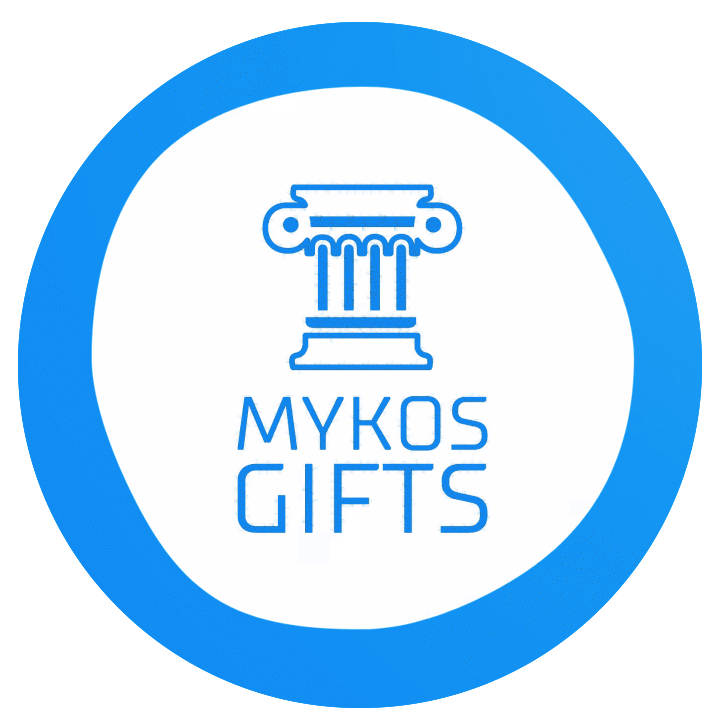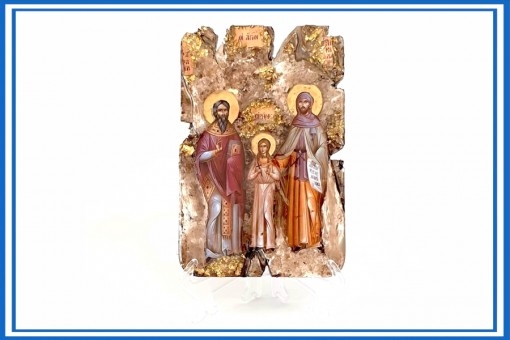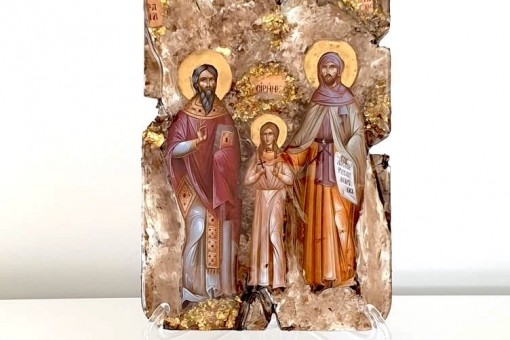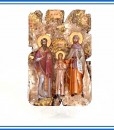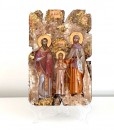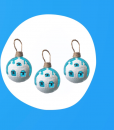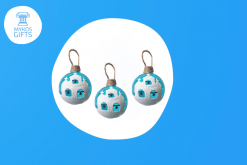ICON DESCRIPTION
Gorgeous handmade Wooden 3d icon of Saints Raphael, Nicholas and Irene – wooden
Icon is made from print Mounted on wood – ,wood burning, paint , gold flakes epoxy, paint.
Icon size is approximately 23cmH x 15cmW x 1cm D
Weight = 235g
Icon comes with stand and comes packaged in a dust bag for its added protection.
PLEASE NOTE:
NO 2 ICONS ARE EVER THE SAME- THESE ARE HANDMADE AND ONE OFF A KIND. YOU CAN ORDER ONE LIKE THIS- SAME PRINT – BUT PLEASE BE AWARE IT WILL DIFFER AS PRODUCT IS HAND MADE AND EVERY PIECE WILL DIFFER IN SHAPE AND COLOURING
ABOUT SAINTS RAPHAEL, NICHOLAS & IRENE
Memory celebrated on the first Tuesday after Easter Sunday
Saints Raphael, Nicholas and Irene suffered martyrdom by the Turks on the island of Lesvos (also called Mytilene) on April 9 1463 AD, after the fall of Constantinople. St Raphael was the Abbot of Karyes near the village of Thermi on the island. St Nicholas was a Deacon at the monastery, and St Irene was the 12-year-old daughter of the major of Thermi. The three saints were at the monastery with the village teacher and St Irene’s father when the Turks raided it.
These saints were unknown for about 500 years after their martyrdoms during the Turkish occupation of Lesvos. In 1959 the three saints appeared to the people on Lesvos in dreams and visions. They guided excavations of their own graves, called people to repentance, and cured many kinds of diseases.
The saints revealed how they were cruelly tortured at the monastery, calling it a “second Golgotha” (in the words of St Raphael). St Raphael’s torture ended when his head was sawn off. St Nicholas died of heart failure when he was being tortured. St Irene was tortured in front of her father and burnt alive in a clay cask, where her charred bones were later found. The teacher’s head was cut off and placed between his legs when he was buried. A great deal of blood was shed at the monastery; the saints were martyred for the sake of their Christian faith and Fatherland.
Found amongst these excavation was St Raphael’s round metallic Enkopion with a low relief of Christ Pantocrator on it. Orthodox Bishops wear Enkopions externally on the breast.
